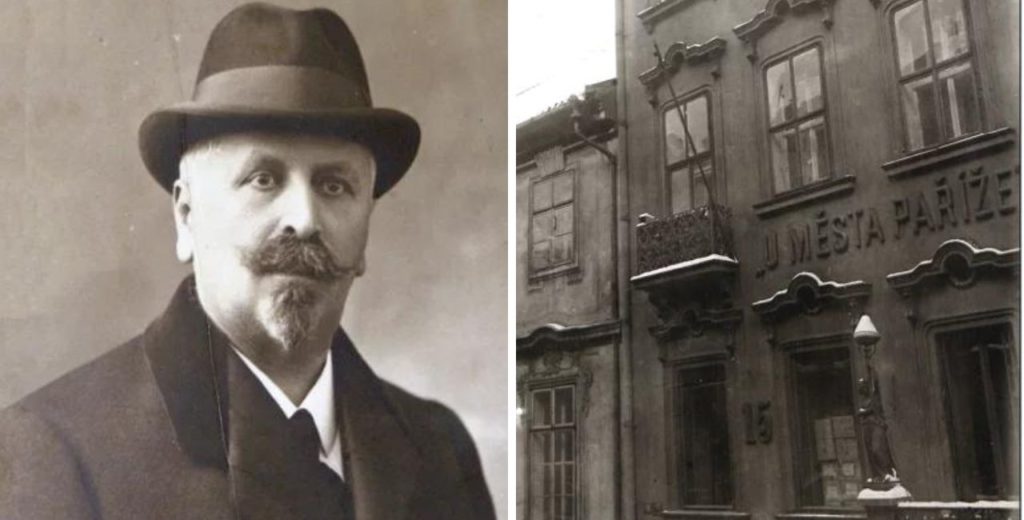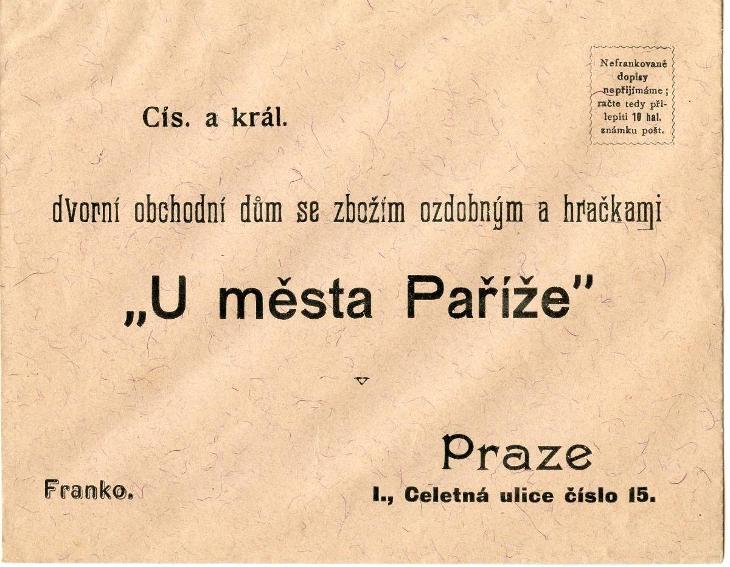Prague’s “Paris”: Biggest Department Store of 19th Century Could be Found in Celetná

For many decades of the long 19th century, the renowned department store at Celetná Street No. 15 offered Prague residents and visitors a wide selection of luxurious goods.
According to the late 19th-century guide, was “gorgeously equipped…, had cellars and two storeys. There are 50 gentlemen and 10 ladies employed in the shop.”
Run by August Goldschmid, the U města Paříže (At the City of Paris) store focused on Prague’s elite and initially opened a haberdashery store.
Immediately it became a success, so he started to add more and more types of goods, divided into individual sections like modern shopping centers. Unfortunately, the business did not survive, and after August’s son Karel’s death, the Bata company acquired the house, demolished it and built a functionalist shoe shop instead.
At that time, the department store was the biggest one in Europe. In 1852, August Goldschmid “received” the shop as a wedding present from his father. It offered a little bit of everything – from groceries to drugstores to household items.
August had the spirit of an entrepreneur, and he decided to focus on just one product range at a time. That’s why he chose haberdashery as a unique assortment to find a set clientele among the Prague elite. The haberdashery business was a success, and like his father, August began to add more and more goods to the store like fans and theatre glasses with jewellery. Then he added teas, herbs, toys, and home accessories like tables, statuettes, and other small items.
“He began to build what only much later came to be called the unit department store”, Rudolf Píša describes it in his book Stories of Companies. The store had two floors and a basement. The merchandise was divided into sections, according to type. Customers were attended by 50 salesmen and 10 saleswomen.
In 1883, August’s son Karel became a partner in the company, and when his father retired, Karel ran a prosperous business on his own.

Karel Goldschmid
At that time, the advertisements for the department store were already proclaiming that it was the largest establishment of its kind on the mainland, and it was said that not even Vienna, Berlin, or Paris had such a store. Furthermore, the department store at the Celetná Street was very luxuriously furnished and resembled a palatial palace rather than a shop. Articles were also delivered regularly, with up to 60 cases of new goods a day.
The best years of the U města Paříže came to an end with the start of World War I. Even though business picked up a bit after the war, it never reached its former glory. Moreover, Karel Goldschmid was a bachelor without children, so he didn’t have anyone to pass the shop on to after his brother’s death.
In 1917, Karel came to an agreement with his partners and kept a small share in the company, but the shop was no longer working, so he sold the building to Tomas Bata in 1926.
The building was replaced by a functionalist-style department store designed by Josef Gočár.

Support Prague Morning!
We are proud to provide our readers from around the world with independent, and unbiased news for free.
Our dedicated team supports the local community, foreign residents and visitors of all nationalities through our website, social media and newsletter.
We appreciate that not everyone can afford to pay for our services but if you are able to, we ask you to support Prague Morning by making a contribution – no matter how small 🙂 .



